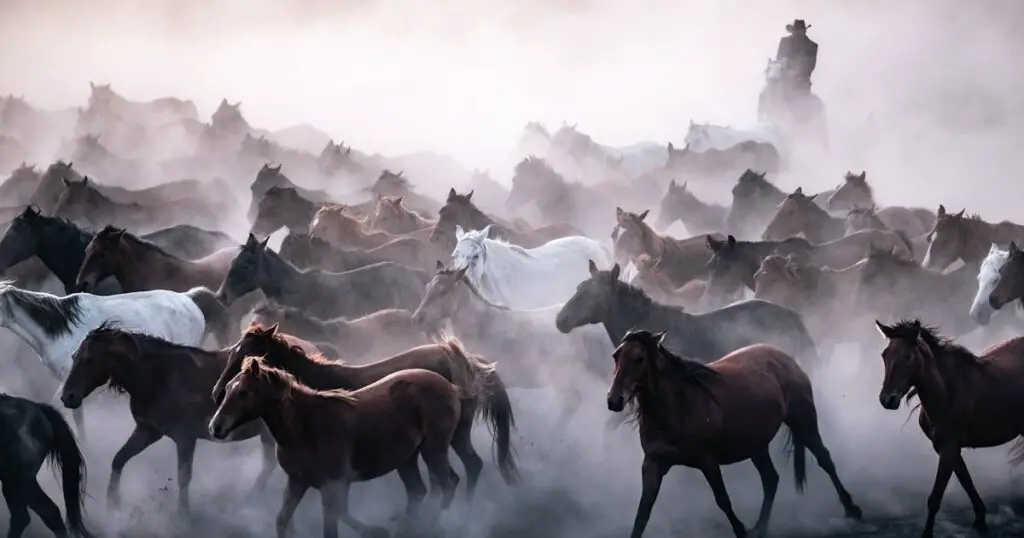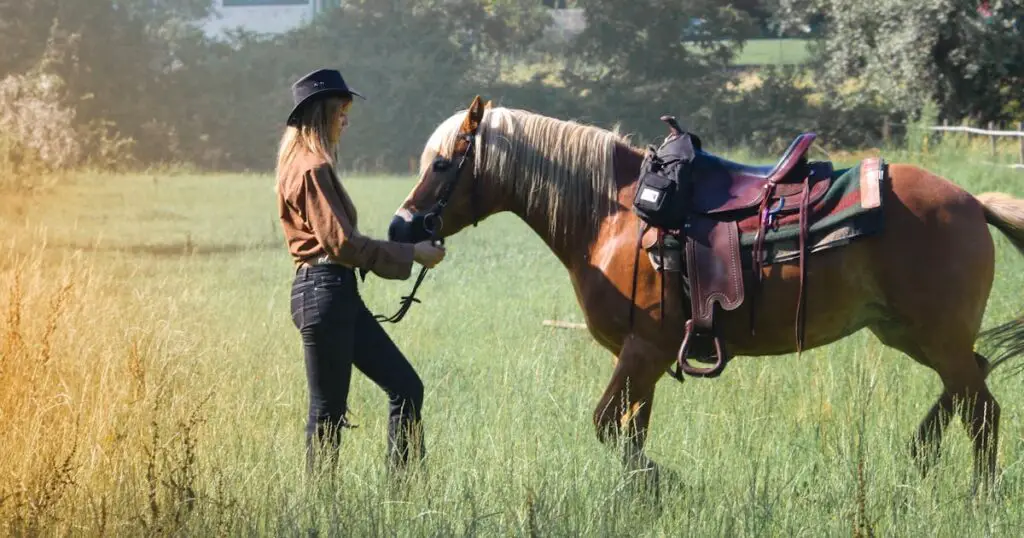Key Takeaway: Dorothy Morrell's legacy as a pioneering bronc rider highlights the resilience and determination of early female athletes, inspiring today's generation to continue breaking barriers in the sporting world.
Dorothy Morrell was a pioneering bronc rider who shattered barriers and paved the way for female athletes in rodeo. Her enduring spirit and formidable skills have immortalized her in the annals of rodeo history.

Even today, Dorothy’s legacy is felt in the hearts of the many women who compete in rodeos nationwide. If she were alive, she would undoubtedly encourage women aspiring to bronc ride to pursue their dreams.
Dorothy’s Career
Dorothy was not only an exceptional athlete but also a vibrant and well-spoken advocate for women’s rights. Deeply involved with the Suffrage movement, she was an accomplished lecturer and frequently gave speeches championing women’s rights.
She and her husband, Skeeter Bill Robbins, made waves both in the rodeo ring and on the silver screen, acting alongside luminaries like Tom Mix, Bill Hart, and Hoot Gibson. Skeeter Bill Robbins served as the General Manager of Gibson’s Golden State Rodeo and was also known for his comedic roles.
Even at 41, Dorothy continued to showcase her talent in rodeos, captivating audiences with her daring and proficiency. Her dedication and passion for the sport earned her a lasting place in the world of women’s rodeo, inspiring countless others to follow in her footsteps.
The End of Women’s Bronc Riding
Sadly, the era of women competing in bronc riding came to an abrupt end in 1929, following the tragic death of Bonnie Carroll while riding at the Pendleton Oregon Roundup. Her death, largely attributed to the dangerous practice of hobbling her feet in the stirrups, led to the decision to bar women from the sport, a choice steeped in panic and gender bias.
This decision was heavily criticized by scholars and historians like Mary Lou LeCompte, who noted that rodeo was one of the few sports where men and women truly competed as equals. She attributed the decline of women’s participation in rodeo to Gene Autry, stating that he relegated women to roles outside of competition.
A New Era
Fortunately, today we see women making significant strides to re-enter rough stock competitions and proving their mettle alongside men. The resurgence of women in these arenas is a testament to the unyielding spirit of pioneers like Dorothy Morrell and Bonnie Carroll.
They would undoubtedly be staunch supporters of today’s female Bronc riders, cheering them on as they break new ground.
Celebrating Dorothy’s Life
Every year, rodeo competitions across the country honor the memory of trailblazers like Dorothy by continuing the proud tradition of rodeo. Dorothy competed in numerous contests across the United States, Canada, and Europe, often during times when women were typically barred from competing in many athletic activities. Her successes in the face of such obstacles underscore her indomitable will and exceptional talent.
Dorothy also served as a mentor for many aspiring young riders throughout her career, providing guidance and inspiration that would last a lifetime. Supporting and attending rodeo performances today is a wonderful way to show appreciation for her contributions to the sport and to female athletes everywhere.
For women who desire to compete in the traditionally male-dominated field of bronc riding, Dorothy’s story serves as a powerful reminder that with enough dedication and passion, anything is possible.
Honoring the Legacy of Women in Rodeo
Dorothy Morrell’s impact and achievements will continue to be remembered and celebrated for years to come, an emblem in the rodeo realm. We can honor her life by learning more about her accomplishments and sharing our knowledge with others who may not have been aware of her incredible story.

As we celebrate Dorothy’s life, let us also remember other iconic women in rodeo like Marie Gibson, Tad Lucas, Fox Hastings, and Rosemarie Williams. Each of these women left their mark on the sport, paving the way for future generations to follow.
Frequently Asked Questions
Who was Dorothy Morrell?
Dorothy Morrell was a pioneering female bronc rider renowned for her exceptional skills and contributions to rodeo. She is celebrated for breaking barriers and advocating for women’s rights, both in the rodeo arena and beyond.
What was Dorothy Morrell’s connection to the suffrage movement?
In addition to her achievements in rodeo, Dorothy was an accomplished lecturer and a fervent advocate for women’s rights. She frequently gave speeches in support of the Suffrage movement, using her platform to champion gender equality.
Why did women stop competing in bronc riding events?
Women were barred from bronc riding competitions following the tragic death of Bonnie Carroll in 1929. The decision was a result of panic and gender bias and marked the end of an era where men and women competed on equal footing in rodeo events.
Are women allowed to compete in bronc riding today?
Yes, many women are making significant strides to re-enter rough stock competitions, challenging traditional norms and proving their skills alongside men. The resurgence of female competitors is a testament to the enduring spirit of rodeo trailblazers like Dorothy Morrell.
Conclusion
Dorothy Morrell’s incredible achievements and her role in shows like the 101 Wild West alongside her husband Skeeter Bill Robbins have cemented her status as one of the most recognizable female bronc riders in history.
Her legacy continues to be celebrated and remembered within the rodeo community and beyond. By sharing her story and honoring her accomplishments, we keep her pioneering spirit alive, ensuring that her impact will be felt for generations to come.



Leave a Comment
You must be logged in to post a comment.